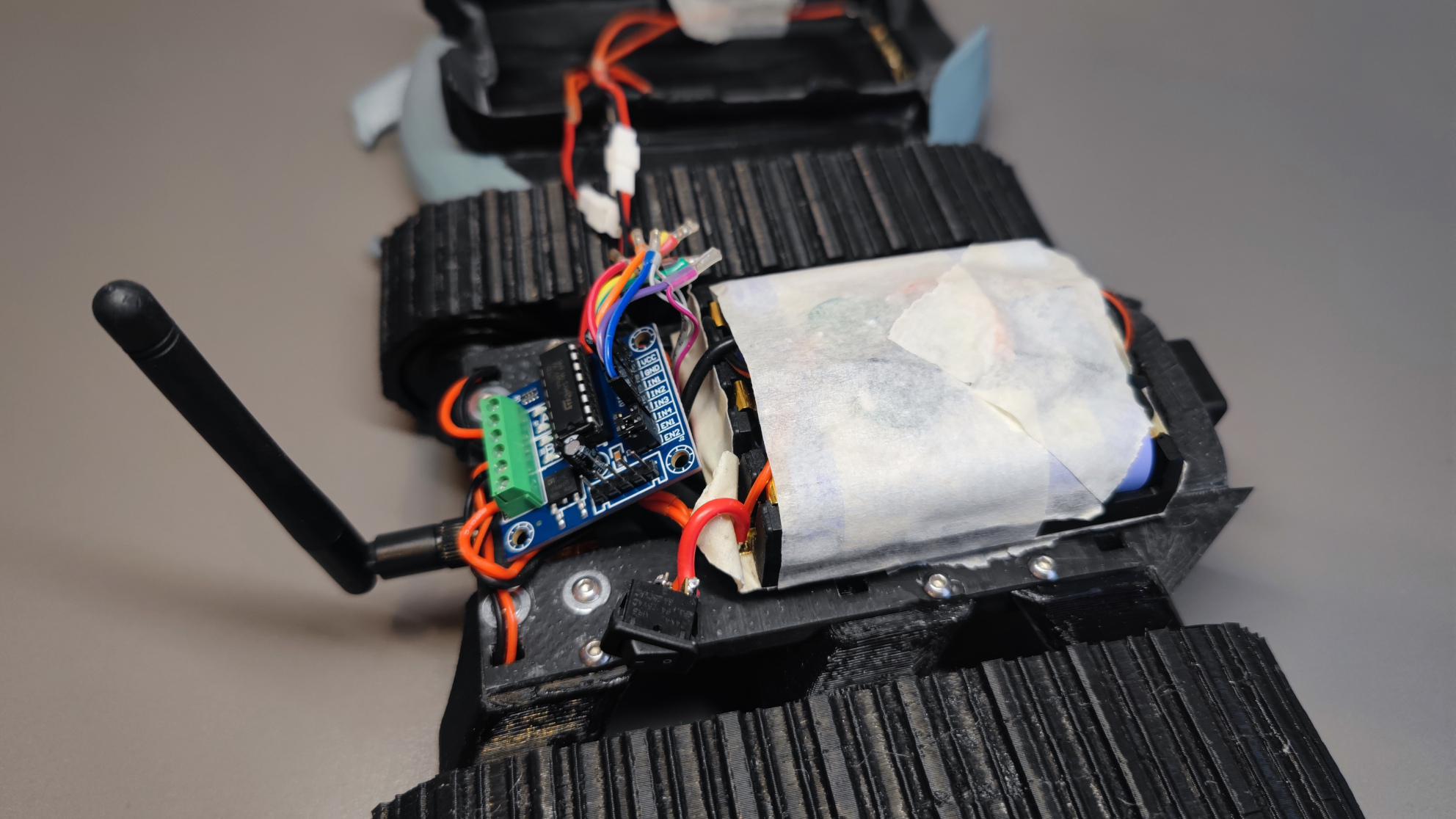
422
Project Caretaker. Part 7. Hardware
This article is part of a series
- Project Caretaker. Part 1. Beginning
- Project Caretaker. Part 2. Design
- Project Caretaker. Part 3. Photoresist
- Project Caretaker. Part 4. Chassic
- Project Caretaker. Part 5. Tracks
- Project Caretaker. Part 6. Modeling and print
- Project Caretaker. Part 7. Hardware
- Project Caretaker. Part 8. Software
- Project Caretaker. Part 9. Charging
- Project Caretaker. Part 10. Bluetooth
- Project Caretaker. Part 11. Home assistant
- Codex wrote WASD controls for the Caretaker
I've already shown the device diagram, let's now take a closer look at the physical components of the device.
The device itself:
- ESP32CAM - the main brain - also known as AI Thinker.
- Wide-angle camera with extended ribbon cable - the viewing angle is not as critical as the length of the cable. With a shorter cable, it would have been more difficult to design an aesthetically pleasing case.
- Wi-Fi antenna with connector - often included with the board.
- 3 li-ion batteries connected in series (12.6v) with holders.
- 2 DC-DC step-down converters (for 12v and 5v).
- 2-channel motor driver - L298N, L293D or equivalent - I'm using L293D due to the smaller board size, although I initially designed for L298N.
- 2 GA12-N20 motors with a gear ratio of 150 (you can use 200 - it will be faster).
- 12 bearings 6803 (two per wheel).
- BMS charging board (if you plan to charge in the device).
- Switch to supply power from the battery.
- MOSFET IRLML0030 + 1 kΩ resistor for controlling LEDs.
- LEDs and resistors - as per your preference.
All other parts are made of plastic, printed on a 3D printer (including the tracks).
Charging station:
- Power supply 12.6V 2A.
- Corresponding power connector for the case.
- Volt-ammeter (preferably less powerful up to 5A, otherwise it won't show small current).
- Contact pair - in my case, these are copper plates and rods.
- A pair of springs for better contact during charging.
The layout of all this hardware in the case is as follows:

If we disassemble it a bit to show the main components:

Here is the 3S BMS charging board, from which wires go to the contact rods:

These rods are filled with the same resin from which the case was printed on a photopolymer printer. I poured it in layers and exposed it with a UV flashlight:

And this is how the rods look from the front. The camera box and the camera itself are not fixed inside in any way - the box is held by a tight fit (and, as practice has shown, may fall out during rare falls), and the camera stays in place due to the elasticity of the ribbon. This also gives an amusing effect - if you press on the camera, it hides inside the case, but then comes back out. I'll consider this a protection against mechanical damage to the lens.

And it would seem that everything is ready, but no, there are still about 5 more articles ahead about the project.
No comments yet
-

Codex wrote WASD controls for the Caretaker
In comments to the video demonstrating the Caretaker, I was long asked to add… -

Klipper on Two Trees Saphire Plus
Something that was long overdue has happened - the stock Marlin firmware stoppe… -

Project Caretaker. Part 11. Home assistant
The project is positioned as remote monitoring, but how can you do that if the… -

Vibe-coding a Series of Articles in BoltCMS
We're creating support for post series using Cursor with Sonnet 3.7. -

Project Caretaker. Part 10. Bluetooth
Connecting the Radiomaster TX12 as a BT controller through the ELRS module. -

Project Caretaker. Part 9. Charging
Since one of our goals is remote control, we should address the power supply is…